Introduction
In today’s society, drugs weave through various facets of life, influencing personal health, public policy, and cultural norms. Understanding the complexities surrounding drug use, addiction, and recovery, as well as the cultural and societal implications, is imperative for fostering informed and responsible approaches to these pervasive substances. ‘Drugs Are All Around’ delves into the reasons behind drug use, the societal impacts of drug policies, and the vital need for harm reduction strategies.
The Nature and Effects of Drugs
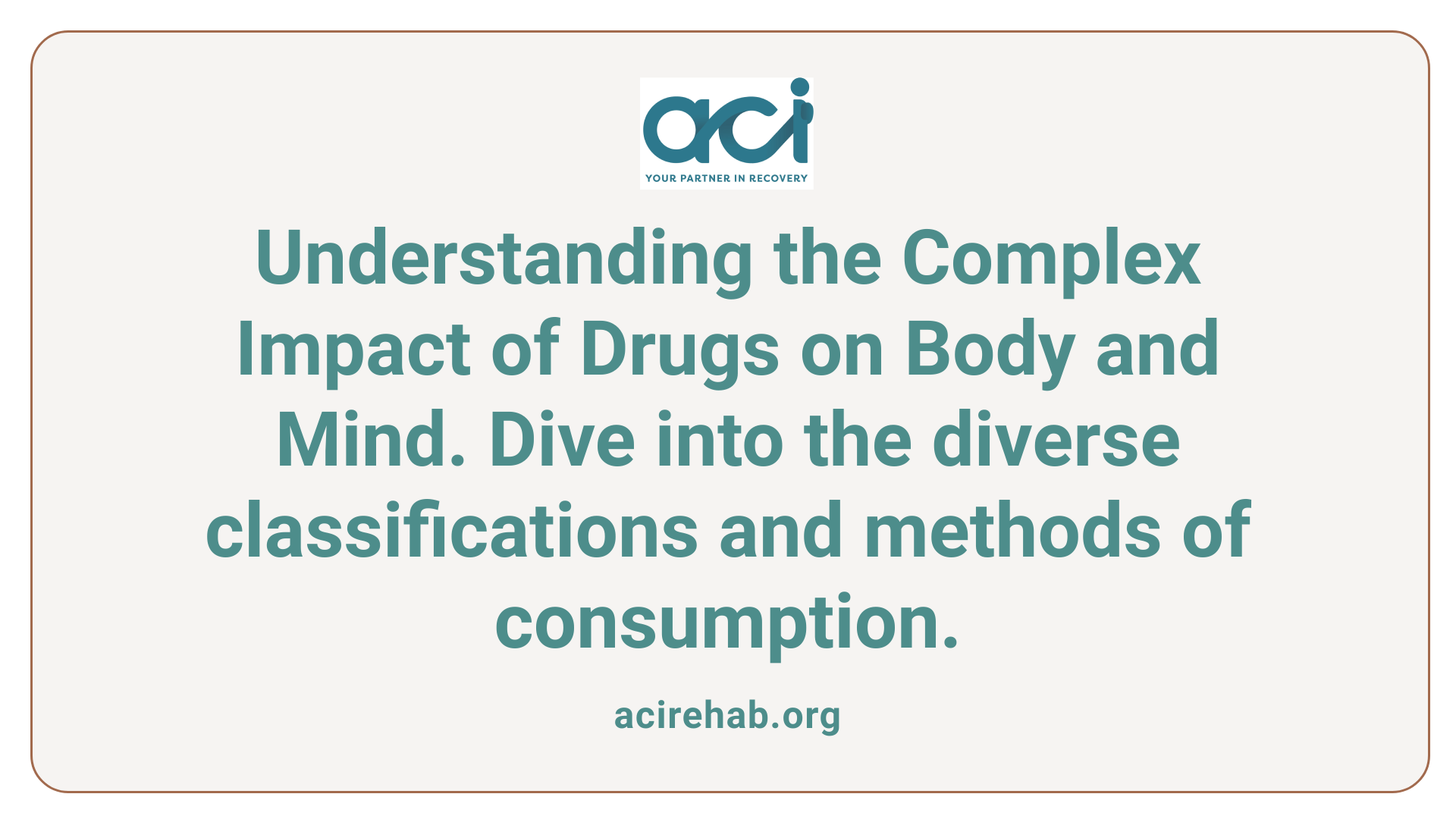
What are drugs and how do they affect the body?
Drugs are substances that significantly alter a person’s mental or physical state. They impact brain function, feelings, behavior, and perceptions in various ways. Originating from diverse sources—from plants and processed products to synthetic chemicals—drugs can be classified into legal and illegal categories, each coming with its unique risks and regulations.
Common methods of consumption include swallowing, inhaling, or injecting, which rapidly introduce drugs into the bloodstream. The variety of drugs leads to a spectrum of effects, influenced not only by the type and dosage but also by an individual’s body size, health, mood, and environment.
Health risks associated with drug use
The health risks associated with drug use underscore the severity of this issue. Some of the most serious risks include:
- Addiction: A psychological and/or physical dependence can develop over time, causing users to prioritize substance use over other activities.
- Mental Health Issues: Long-term drug use can contribute to conditions like depression and anxiety, exacerbating existing mental health issues.
- Overdose: Misusing drugs, especially potent opioids, can lead to fatal overdoses.
Drugs can also manifest harmful effects in physical health, such as increased heart rate or respiratory problems, particularly with stimulants and depressants. Understanding these risks is critical, especially for young users, as illegal substances can present unpredictable dangers.
Impact on mental and physical health
The impact of drugs on mental and physical health is profound and often detrimental. Some common effects include:
- Short-term Effects: These can vary widely, from euphoria and heightened energy to anxiety and paranoia, depending on the drug class.
- Long-term Effects: Chronic use may lead to permanent changes in brain chemistry and function, contributing to long-lasting health complications like liver damage and cardiovascular diseases.
- Behavioral Changes: Users may exhibit mood fluctuations, neglect personal care, and experience changes in social circles or professional life.
Recognizing these various facets of drug use can help forge more effective education and treatment strategies to address substance use disorders.
Composition and Purpose of Drugs
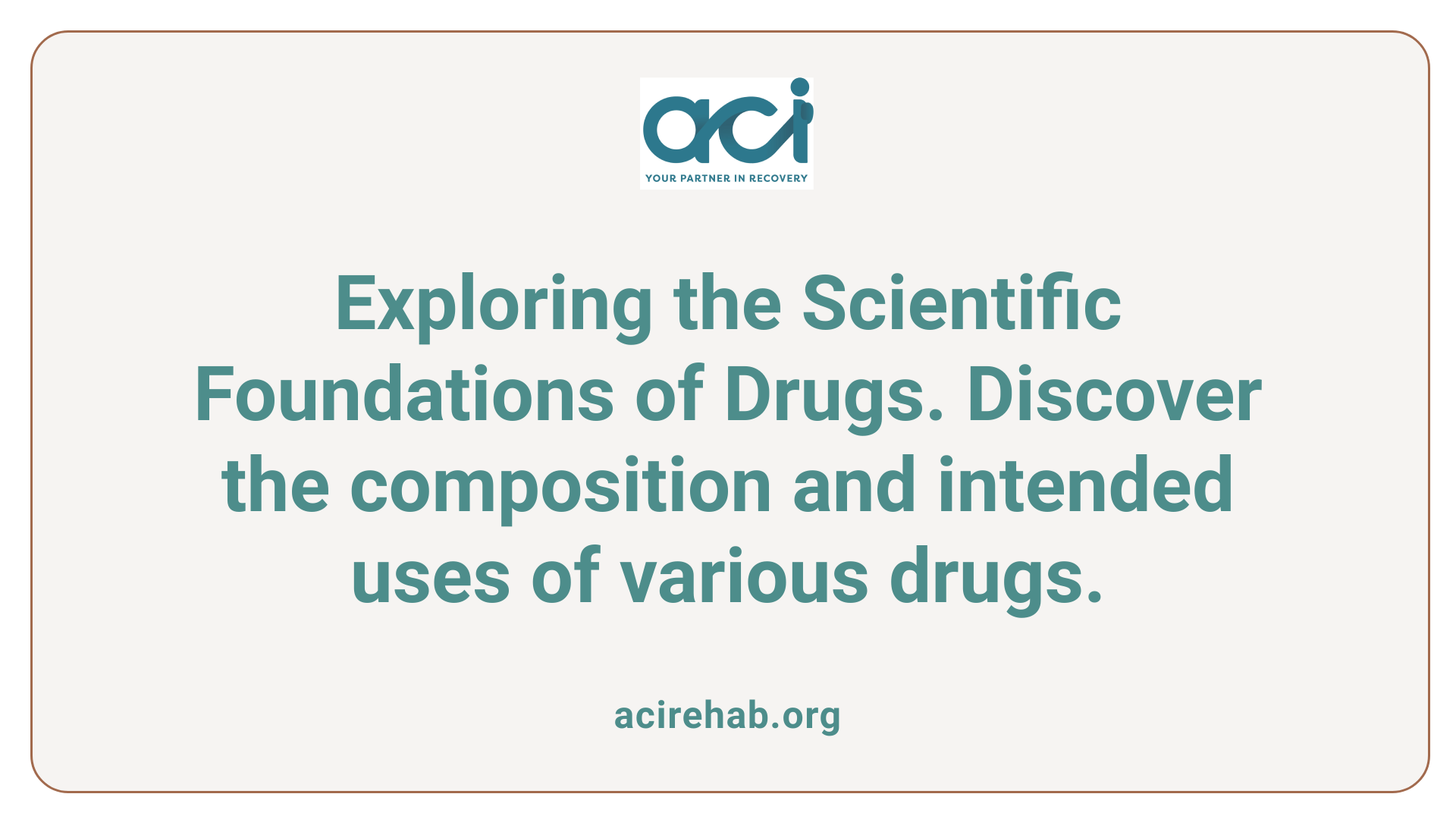
What are drugs made of?
Drugs are composed of various chemical compounds which can originate from both natural sources, like plants and fungi, or be synthetically produced in laboratories. Their composition plays a significant role in how they interact within the human body. For instance, medicinal drugs are specifically formulated to treat, prevent, or alleviate illnesses. Common forms include tablets, liquids, and injections, each tailored for different therapeutic purposes.
Types of drugs and their purposes
Drugs can be categorized based on their functions:
- Antibiotics: Treat bacterial infections.
- Analgesics: Relieve pain.
- Antidepressants: Manage mood disorders.
- Vaccines: Stimulate the immune response to prevent diseases.
Each class of drugs is designed with specific therapeutic goals in mind, ensuring effective treatment tailored to patients’ needs.
Regulatory approval for medications
Before any new drug can be marketed for public use, it must undergo rigorous testing and be approved by the U.S. Food and Drug Administration (FDA). This process evaluates both the safety and effectiveness of the drug through clinical trials. Moreover, understanding the proper use of medications, including potential side effects and safe practices, is vital for minimizing risks and maximizing treatment benefits.
Why People Use Drugs
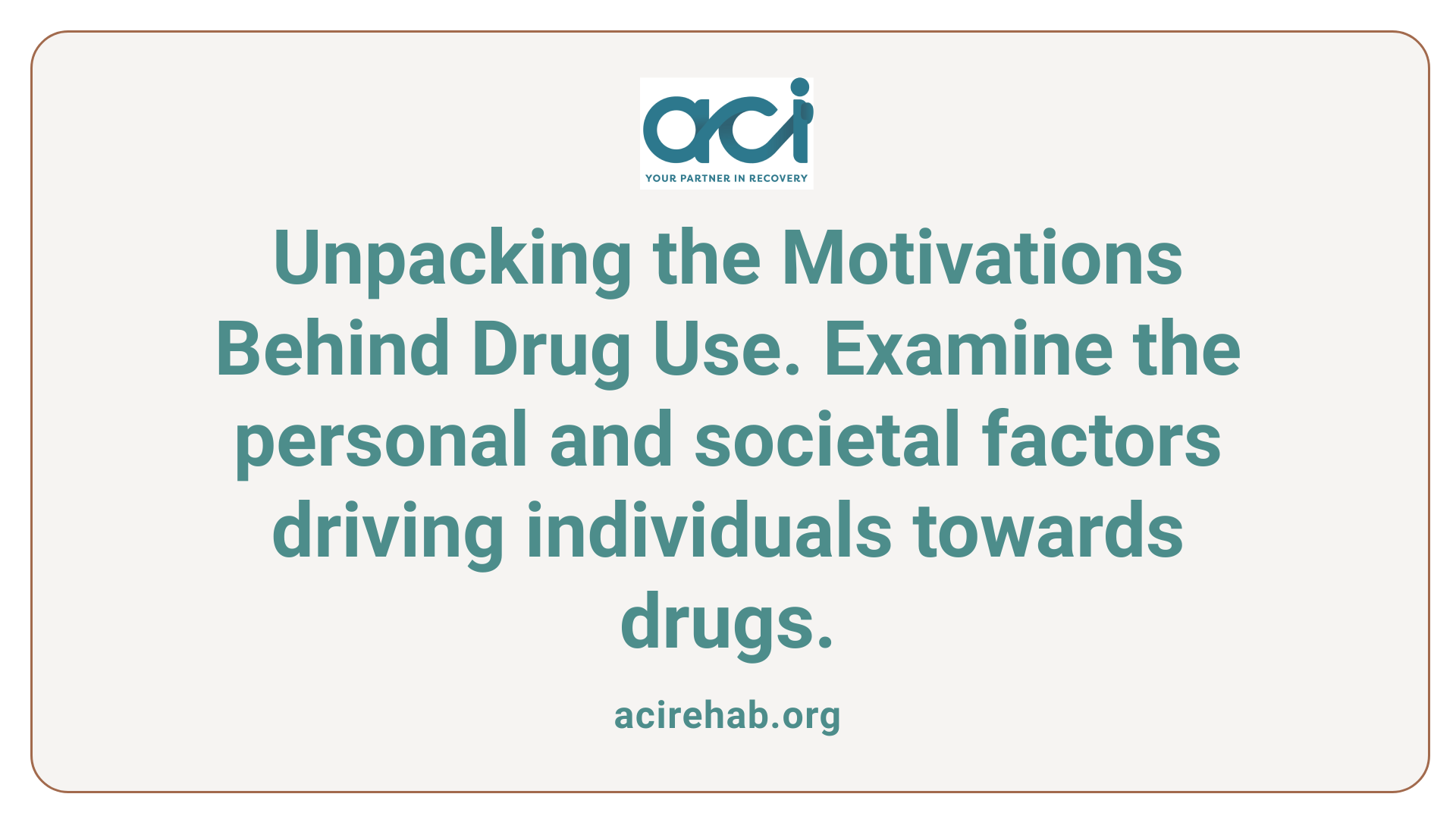
Motivations Behind Drug Use
People may turn to drugs for a variety of reasons. The desire to feel good often leads individuals to seek the euphoric effects of substances. Additionally, alleviating bad feelings—be it stress, trauma, or anxiety—fuels drug use. Some individuals are motivated by the need to enhance performance, whether academically or physically, creating a dangerous reliance on substances.
Influence of Peer Pressure on Drug Use
Particularly among teens, peer pressure significantly influences drug use. Adolescents, striving for acceptance or to fit in, may experiment with drugs as a means to bond with friends or appear socially acceptable. These external pressures can lead to habitual use, despite an understanding of the associated risks.
Drugs and Mental Health
Mental health issues often intertwine with substance use. Individuals coping with untreated mental health problems may resort to drugs as a form of self-medication. This complex relationship often perpetuates a cycle of dependency, highlighting how environmental factors and personal circumstances shape drug use.
Why do individuals engage in drug use despite risks?
People may turn to drugs for a variety of reasons, including the desire to feel good, alleviate negative feelings, enhance performance, or due to the influence of peers, especially among teenagers. Certain environments and untreated mental health issues also play significant roles in prompting drug use, showcasing how complex and multifaceted these motivations can be.
Exploring Drug Addiction
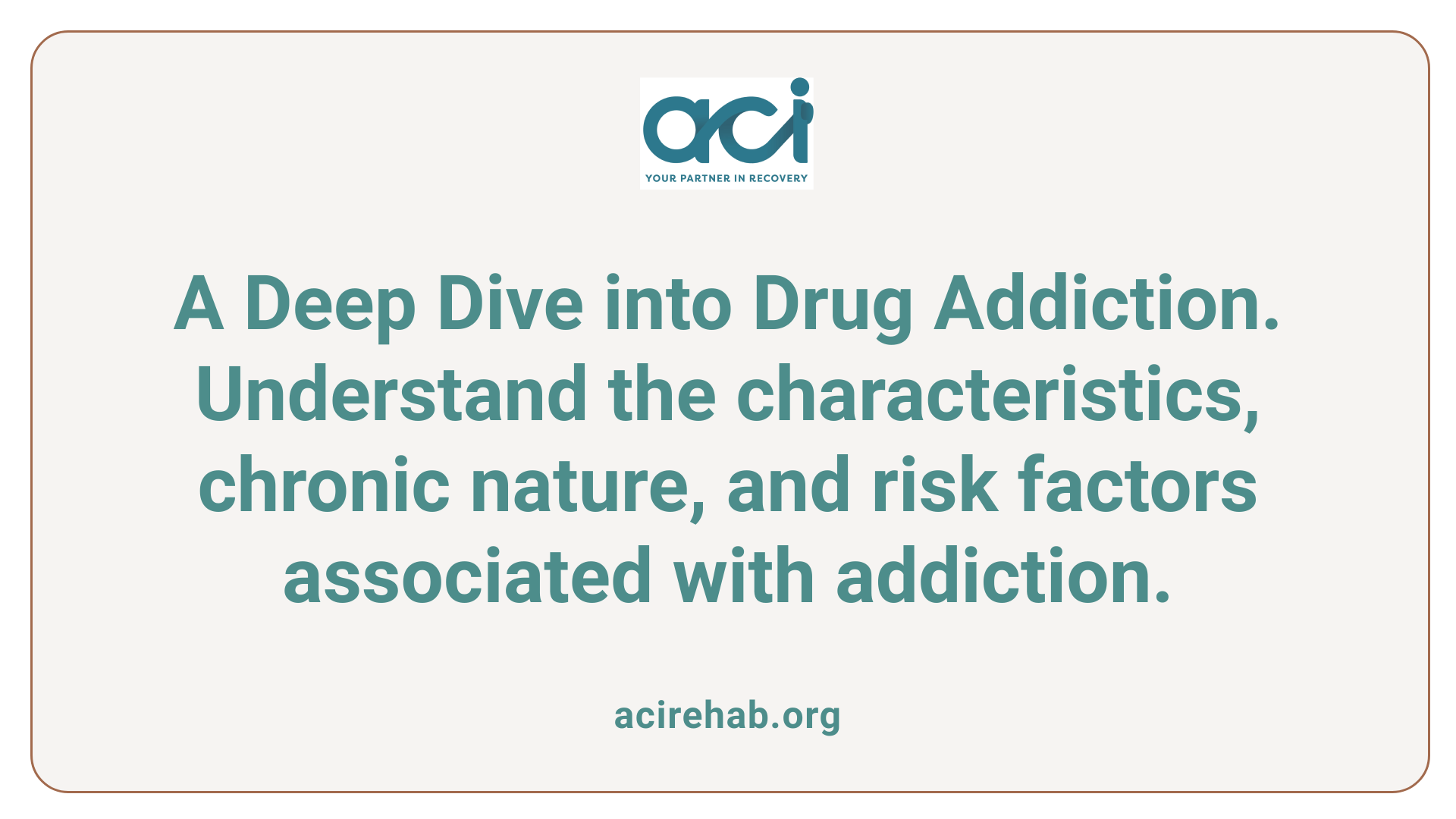
What are the main characteristics of drug addiction?
Drug addiction, or substance use disorder, is characterized by an inability to control drug use despite the harm it causes. This reflects a chronic brain disease where individuals often grapple with intense cravings and increasing tolerance. As their bodies adapt, users find they need to consume larger doses to achieve the same effects. Moreover, individuals may continue using substances even while recognizing the life-threatening consequences associated with their habits.
How is addiction considered a chronic disease?
Addiction is not a transient issue; it can persist long-term, even after periods of abstinence. While individuals may experience times of sobriety, the crucial factor is that the disease stems from complex interactions between environmental, psychosocial, and biological influences. Recognizing addiction as a chronic disease highlights the need for sustained treatment and support to manage it effectively.
What are the environmental and genetic risk factors?
Various factors contribute to the risks of developing drug addiction, including:
- Childhood environments: Neglectful or abusive settings can increase vulnerability.
- Untreated mental health issues: Depression, anxiety, or trauma can lead individuals to self-medicate with drugs.
- Peer influences: Especially during adolescence, the desire for acceptance among peers can push individuals toward experimentation with drugs.
Understanding these factors is essential for developing targeted prevention and intervention strategies for drug addiction.
Paths to Recovery
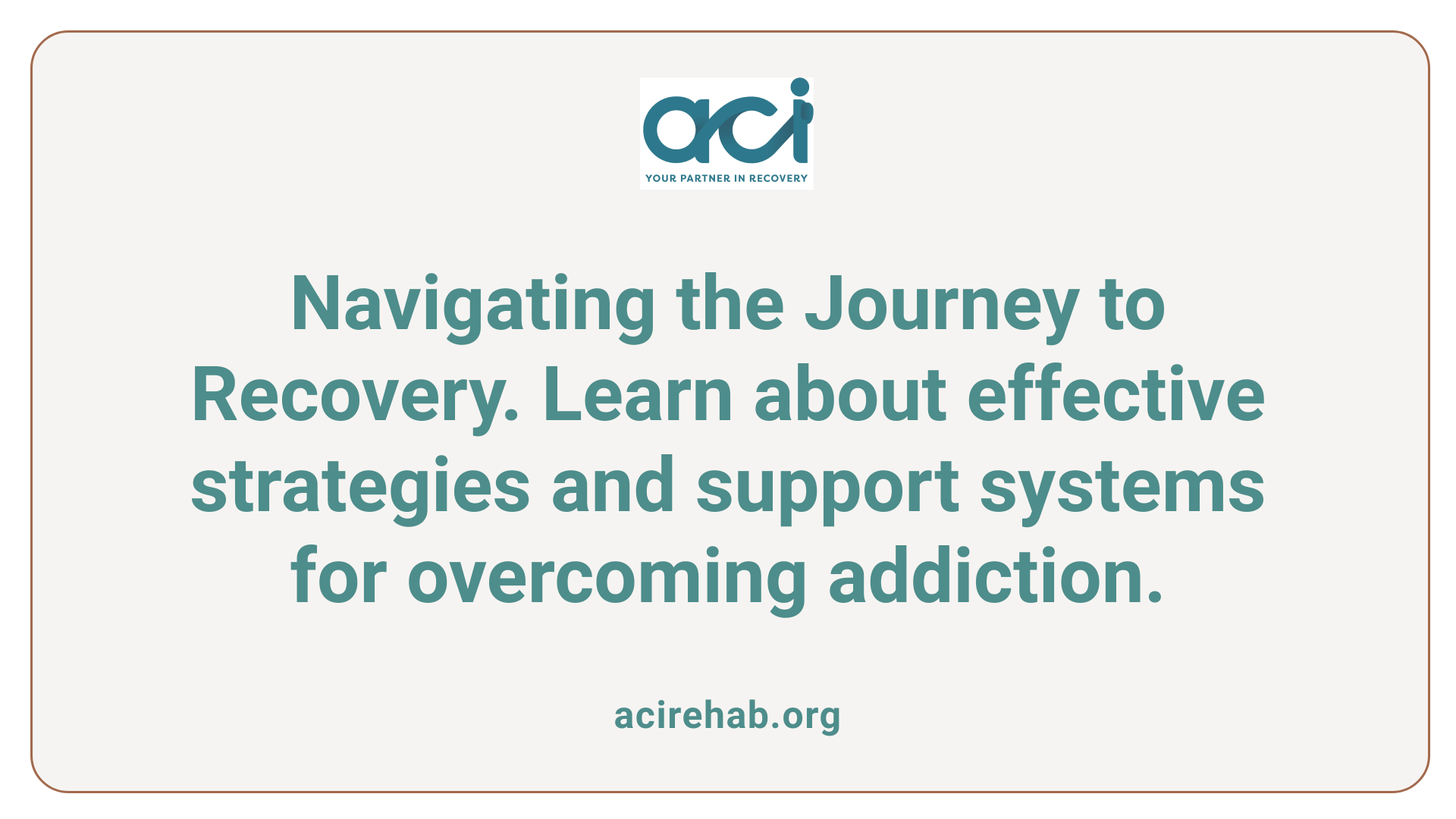
How can individuals recover from drug addiction?
Recovery from addiction is achievable through dedicated long-term treatment. This commitment is often the cornerstone for those aiming to break free from substance use disorders. Successful recovery programs leverage evidence-based practices that incorporate therapy, support groups, and holistic approaches tailored to individual needs.
Effective treatment options include:
- Behavioral Therapies: Address underlying psychological factors that contribute to addiction.
- Medication-Assisted Treatment (MAT): Combines behavioral therapy with medications to reduce cravings and withdrawal symptoms.
- Support Groups: Groups like Narcotics Anonymous help foster a sense of community and shared experience.
Commitment to recovery often leads to profound life changes, enabling individuals to regain control over their lives. Support systems play a critical role, assisting individuals in navigating their recovery journey. Emphasis on building a healthy lifestyle and strong interpersonal relationships are vital for sustaining recovery, reducing the risk of relapse.
Long-term recovery support systems contribute significantly to a person’s ability to remain drug-free, highlighting that recovery is not merely about stopping drug use, but about cultivating resilience against future temptations.
Slang, Culture, and Perception of Drugs
Drug-Related Slang Terminology
Slang terminology surrounding drug use is vast and varied. Terms such as ‘addict’ and ‘junkie’ reveal deep societal biases and reinforce negative stereotypes about individuals who use drugs. Furthermore, distinct slang names for specific drugs—like ‘blow’ for cocaine or ‘weed’ for cannabis—highlight the evolving language shaped by cultural attitudes towards these substances.
Cultural Attitudes Towards Drugs
Cultural perceptions of drugs and their users often fluctuate, influenced by media portrayal, political stances, and historical context. While some cultures may view certain substances as socially acceptable, others label them as taboo. For instance, marijuana has gained acceptance in many areas due to shifting laws and social movements, yet stigma persists in different regions.
Societal Perceptions of Drug Users
Society’s view of drug users is heavily informed by language and the narratives surrounding drug culture. People often associate users with shortcomings or moral failures, creating a divide that complicates recovery efforts. Challenging these perceptions can foster compassion and understanding, ultimately leading to more effective discussions about substance use and addiction resolution.
| Slang Terms | Common Usage | Cultural Implications |
|---|---|---|
| Addict | Describes someone dependent on drugs | Negative stigma, suggests a lack of control |
| Junkie | Often derogatory for heavy users | Reinforces stereotypes, dehumanizing language |
| Mary Jane | Slang for marijuana | Casual acceptance among frequent users |
The Historical Context of Drug Policies
Historical Drug Policies and Campaigns
In the United States, numerous drug policies, such as the notorious "War on Drugs" initiated in the 1980s, shaped societal views on substance use. This campaign, fueled by President Reagan’s commitment to combat drug abuse, emphasized deterrence over treatment, fundamentally altering the landscape of drug policy. An estimated $1.7 billion was funneled into anti-drug initiatives, increasing both awareness and penalties for drug-related offenses.
Impact of the ‘Just Say No’ Campaign
The ‘Just Say No’ campaign, led by Nancy Reagan, aimed to deter drug use through simple messaging targeted at children and teens. While it elevated public consciousness about drug abuse issues—64% of Americans cited it as a major concern by 1989—the program’s long-term effectiveness has been criticized. Research suggests that such abstinence-only leaning educational initiatives often fail to provide the knowledge necessary for informed decision-making about drug use.
Consequences of the War on Drugs
The War on Drugs has had lasting consequences, particularly exacerbating issues of racial inequality. Incarceration rates for nonviolent drug offenses surged, escalating from 50,000 in 1980 to over 400,000 by 1997. This disproportionately impacted African American communities, bringing to light the complexities and failures of these policies. The focus on punitive measures instead of treatment reflects ongoing discussions about how to approach drug addiction more compassionately and effectively.
| Policy/Campaign | Focus | Observed Outcomes |
|---|---|---|
| War on Drugs | Deterrence | Increased incarceration rates, particularly among minorities |
| Just Say No | Abstinence | Limited long-term impact on drug use reduction |
| D.A.R.E. Campaign | Education | High implementation rates, but minimal effectiveness |
This ongoing dialogue continues to inform contemporary drug education and treatment strategies, pushing for a more holistic and equitable approach.
The Role of Harm Reduction and Education
Why is harm reduction crucial in drug education?
Harm reduction strategies are essential in drug education because they equip individuals, especially young people, with the knowledge necessary to make informed choices. Programs like Safety First emphasize an understanding of drug use that transcends the simplistic message of abstinence. Instead, they offer scientifically accurate, compassionate information on how drugs affect the body and mind.
Harm Reduction Strategies
These strategies focus on minimizing the negative consequences associated with drug use rather than solely advocating for complete abstinence. By providing accurate facts, students learn about safe practices, the importance of recognizing overdose signs, and ways to navigate peer pressure.
Importance of Accurate Drug Education
Accurate education goes hand in hand with harm reduction. When young people receive factual information, they are better prepared to make safer decisions. Traditional abstinence-only programs have been criticized for lacking effectiveness; thus, updated curricula, like Safety First, have emerged to address these shortcomings.
Programs like Safety First
Safety First is an exemplary initiative aiming to tackle the gaps in drug education. This program consists of interactive lessons that demystify drug use, emphasize harm reduction, and encourage healthier choices. Evaluations show an increase in student knowledge regarding drug-related issues, contributing positively to public health outcomes.
Analyzing Drug Use and Its Impact
How do different types of drugs affect individuals and society?
Various drugs, ranging from common substances like alcohol and cannabis to potent stimulants such as cocaine and methamphetamine, can significantly impact both individuals and society. These substances can alter mental states, resulting in enhanced feelings of euphoria, increased energy, or relaxation. However, they also carry substantial risks, leading to health complications that can vary from mild to severe.
Commonly Used Drugs and Their Effects:
| Drug Type | Common Effects | Health Risks |
|---|---|---|
| Alcohol | Euphoria, lowered inhibitions | Liver disease, addiction, impaired judgment |
| Cannabis | Relaxation, altered perception | Mental health issues, respiratory problems |
| Cocaine | Increased energy, alertness | Cardiovascular issues, addiction |
| Heroin | Euphoria, pain relief | Addiction, respiratory depression |
| Methamphetamine | Increased energy, focus | Severe dental problems, violent behavior |
Misuse of prescription drugs also presents serious concerns, as dependency can develop rapidly, especially with opioids. Polysubstance use exacerbates these risks, leading to potential overdoses and chronic health issues.
Overall, the societal implications of drug use are profound. They encompass rising healthcare costs, strains on law enforcement, and increased rates of addiction and overdose. Communities often face the challenge of balancing the need for treatment and prevention while addressing the implications of drug-related crimes and health emergencies.
Conclusion
Drugs permeate society on multiple levels, touching on issues of health, policy, culture, and education. As the narrative has revealed, drug use and addiction are complex phenomena influenced by numerous factors, including environment, mental health, and societal norms. By embracing harm reduction strategies and fostering informed discourse, society can better understand the challenges and work towards effective solutions. Through education and compassionate support, those impacted by drug use have pathways to recovery and healthier futures, making it imperative for ongoing dialogue and policy review to keep pace with these intertwining issues.
References
- The Science of Drug Use: A Resource for the Justice Sector
- What If Drugs Aren’t as Bad as We’ve Been Told? – GQ
- Drug And Alcohol Slang Terms – Addiction Center
- How drugs affect your body – Better Health Channel
- Drugs A to Z – FRANK
- Commonly Used Drugs Charts – National Institute on Drug Abuse
- Drug Use and Addiction – MedlinePlus

